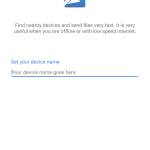Posts Tagged: WiFi
The Galaxy S24 And S24+ Don’t Have Wi-Fi 7 Because Samsung
Samsung’s Galaxy S24 and S24+ don’t support Wi-Fi 7 even though US versions are perfectly capable of doing so. It all comes down to a deliberate decision made by Samsung.
TalkAndroid
What are portable Wi-Fi hotspots, and how do they work?
Here’s what you need to know about portable Wi-Fi hotspots, with Digital Trends as your source for the latest tech news and guides.
Digital Trends
Hitting the Books: The thirty-year quest to make WiFi a connectivity reality
The modern world of consumer tech wouldn’t exist as we know it if not for the near-ubiquitous connectivity that Wi-Fi internet provides. It serves as the wireless link bridging our mobile devices and smart home appliances, enabling our streaming entertainment and connecting us to the global internet.
In his new book, Beyond Everywhere: How Wi-Fi Became the World’s Most Beloved Technology, Greg Ennis, who co-authored the proposal that became the technical basis for WiFi technology before founding the Wi-Fi Alliance and serving as its VP of Technology for a quarter century, guides readers on the fascinating (and sometimes frustrating) genesis of this now everyday technology. In the excerpt below, Ennis recounts the harrowing final days of pitching and presentations before ultimately convincing the IEEE 802.11 Wireless LAN standards committee to adopt their candidate protocol as well as examine the outside influence that Bob Metcalf — inventor of both Ethernet, the standard, and 3Com, the tech company — had on Wi-Fi’s eventual emergence.
Excerpted from Beyond Everywhere: How Wi-Fi Became the World’s Most Beloved Technology (c) 2023 by Greg Ennis. Published by Post Hill Press. Used with permission.
With our DFWMAC foundation now chosen, the work for the IEEE committee calmed down into a deliberate process for approving the actual text language for the standard. There were still some big gaps that needed to be filled in—most important being an encryption scheme—but the committee settled into a routine of developing draft versions of the MAC sections of the ultimate standard document. At the January 1994 meeting in San Jose, I was selected to be Technical Editor of the entire (MAC+PHY) standard along with Bob O’Hara, and the two of us would continue to serve as editors through the first publication of the final standard in 1997.
The first draft of the MAC sections was basically our DFWMAC specification reformatted into the IEEE template. The development of the text was a well-established process within IEEE standards committees: as Bob and I would complete a draft, the members of the committee would submit comments, and at the subsequent meeting, there would be debates and decisions on improvements to the text. There were changes made to the packet formats, and detailed algorithmic language was developed for the operations of the protocol, but by and large, the conceptual framework of DFWMAC was left intact. In fact, nearly thirty years after DFWMAC was first proposed, its core ideas continue to form the foundation for Wi-Fi.
While this text-finalization process was going on, the technology refused to stand still. Advances in both radio communications theory and circuit design meant that higher speeds might be possible beyond the 2-megabit maximum in the draft standard. Many companies within the industry were starting to look at higher speeds even before the original standard was finally formally adopted in 1997. Achieving a speed greater than 10 megabits — comparable to standard Ethernet — had become the wireless LAN industry’s Holy Grail. The challenge was to do this while staying within the FCC’s requirements — something that would require both science and art.
Faster is always better, of course, but what was driving the push for 10 megabits? What wireless applications were really going to require 10-megabit speeds? The dominant applications for wireless LANs in the 1990s were the so-called “verticals” — for example, Symbol’s installations that involved handheld barcode scanners for inventory management. Such specialized wireless networks were installed by vertically integrated system providers offering a complete service package, including hardware, software, applications, training, and support, hence the “vertical” nomenclature. While 10-megabit speeds would be nice for these vertical applications, it probably wasn’t necessary, and if the cost were to go up, such speeds wouldn’t be justifiable. So instead, it would be the so-called “horizontal” market — wireless connectivity for general purpose computers — that drove this need for speed. In particular, the predominantly Ethernet-based office automation market, with PCs connected to shared printers and file servers, was seen as requiring faster speeds than the IEEE standard’s 2 megabits.
Bob Metcalfe is famous in the computer industry for three things: Ethernet, Metcalfe’s Law, and 3Com. He co-invented Ethernet; that’s simple enough and would be grounds for his fame all by itself. Metcalfe’s Law— which, of course, is not actually a law of physics but nonetheless seems to have real explanatory power— states that the value of a communication technology is proportional to the square of the number of connected devices. This intuitively plausible “law” explains the viral snowball effect that can result from the growing popularity of a network technology. But it would be Metcalfe’s 3Com that enters into our Wi-Fi story at this moment.
Metcalfe invented Ethernet while working at PARC, the Xerox Palo Alto Research Center. PARC played a key role in developing many of the most important technologies of today, including window-based graphic computer interfaces and laser printing, in addition to Ethernet. But Xerox is famous for “Fumbling the Future,” also the title of a 1999 book documenting how “Xerox invented, then ignored, the first personal computer,” since the innovations developed at PARC generally ended up being commercialized not by Xerox but by Apple and others. Not surprisingly, Metcalfe decided he needed a different company to take his Ethernet invention to the market, and in 1979, he formed 3Com with some partners.
This was the same year I joined Sytek, which had been founded just a couple of months prior. Like 3Com, Sytek focused on LAN products, although based on broadband cable television technology in contrast to 3Com’s Ethernet. But whereas Sytek concentrated on hardware, 3Com decided to also develop their own software supporting new LAN-based office applications for shared PC access to data files and printers. With these software products in combination with their Ethernet technology, 3Com became a dominant player in the booming office automation market during the nineties that followed the introduction of personal computers. Bob Metcalfe was famously skeptical about wireless LANs. In the August 16, 1993, issue of InfoWorld, he wrote up his opinion in a piece entitled “Wireless computing will flop — permanently”:
This isn’t to say there won’t be any wireless computing. Wireless mobile computers will eventually be as common as today’s pipeless mobile bathrooms. Porta-potties are found on planes and boats, on construction sites, at rock concerts, and other places where it is very inconvenient to run pipes. But bathrooms are still predominantly plumbed. For more or less the same reasons, computers will stay wired.
Was his comparison of wireless to porta-potties just sour grapes? After all, this is coming from the inventor of Ethernet, the very archetype of a wired network. In any event, we were fortunate that Metcalfe was no longer involved with 3Com management in 1996 — because 3Com now enters our story as a major catalyst for the development of Wi-Fi.
3Com’s strategy for wireless LANs was naturally a subject of great interest, as whatever direction they decided to take was going to be a significant factor in the market. As the premier Ethernet company with a customer base that was accustomed to 10-megabit speeds, it was clear that they wouldn’t take any steps unless the wireless speeds increased beyond the 2 megabits of the draft IEEE standard. But might they decide to stay out of wireless completely, like Bob Metcalfe counselled, to focus on their strong market position with wired Ethernet? And if they did decide to join the wireless world, would they develop their own technology to accomplish this? Or would they partner with an existing wireless developer? The task of navigating 3Com through this twisted path would fall to a disarmingly boyish business development whiz named Jeff Abramowitz, who approached me one afternoon quite unexpectedly.
Jeff tapped me on the shoulder at an IEEE meeting. “Hey, Greg, can I talk with you for a sec?” he whispered, and we both snuck quietly out of the meeting room. “Just wondering if you have any time available to take on a new project.” He didn’t even give me a chance to respond before continuing with a smile: “10 megabits. Wireless Ethernet.” The idea of working with the foremost Ethernet company on a high-speed version of 802.11 obviously enticed me, and I quickly said, “Let’s get together next week.”
He told me that they had already made some progress towards an internally developed implementation, but that in his opinion, it was more promising for them to partner with one of the major active players. 3Com wanted to procure a complete system of wireless LAN products that they could offer to their customer base, comprising access points and plug-in adapters (“client devices”) for both laptops and desktops. There would need to be a Request for Proposal developed, which would, of course, include both technical and business requirements, and Jeff looked to me to help formulate the technical requirements. The potential partners included Symbol, Lucent, Aironet, InTalk, and Harris Semiconductor, among others, and our first task was to develop this RFP to send out to these companies.
Symbol should need no introduction, having been my client and having played a major role in the development of the DFWMAC protocol that was selected as the foundation for the 802.11 standard. Lucent may sound like a new player, but in fact, this is simply our NCR Dutch colleagues from Utrecht — including Wim, Cees, Vic, and Bruce — under a new corporate name, NCR having been first bought by AT&T and then spun off into Lucent. Aironet is similarly an old friend under a new name — back at the start of our story, we saw that the very first wireless LAN product approved by the FCC was from a Canadian company called Telesystems, which eventually was merged into Telxon, with Aironet then being the result of a 1994 spinoff focusing on the wireless LAN business. And in another sign of the small-world nature of the wireless LAN industry at this time, my DFWMAC co-author, Phil Belanger, had moved from Xircom to Aironet in early 1996.
The two companies here who are truly new to our story are InTalk and Harris. InTalk was a small startup founded in 1996 in Cambridge, England (and then subsequently acquired by Nokia), whose engineers were significant contributors to the development of the final text within the 802.11 standard. Harris Corporation was a major defense contractor headquartered in Melbourne, Florida, who leveraged their radio system design experience into an early wireless LAN chip development project. Since they were focused on being a chip supplier rather than an equipment manufacturer, we didn’t expect them to submit their own proposal, but it was likely that other responders would incorporate their chips, so we certainly viewed them as an important player.
Over the first couple of months in 1997, Jeff and I worked up a Request for Proposal for 3Com to send out, along with a 3Com engineer named David Fisher, and by March we were able to provide the final version to various candidate partners. Given 3Com’s position in the general LAN market, the level of interest was high, and we indeed got a good set of proposals back from the companies we expected, including Symbol, Lucent, InTalk, and Aironet. These companies, along with Harris, quickly became our focus, and we began a process of intense engagement with all of them over the next several months, building relationships in the process that a year later would ultimately lead to the formation of the Wi-Fi Alliance.
Bob Metcalfe’s wireless skepticism had been soundly rejected by the very company he founded, with 3Com instead adopting the mantle of wireless evangelism. And Wireless Ethernet, soon to be christened Wi-Fi, was destined to outshine its wired LAN ancestor.
This article originally appeared on Engadget at https://www.engadget.com/hitting-the-books-beyond-everywhere-greg-ennis-post-hill-press-143010153.html?src=rss
Engadget is a web magazine with obsessive daily coverage of everything new in gadgets and consumer electronics
Apple could limit WiFi 6E availability to iPhone 15 Pro models
The feature gap between the iPhone and iPhone Pro could widen with the 2023 models. According to a leaked antenna design document obtained by MacRumors, the iPhone 15 Pro and Pro Max will include WiFi 6E connectivity, while their more affordable siblings will not. The document, a schematic outlining the iPhone 15 line’s antenna architecture, shows iPhone 15 and iPhone 15 Plus will continue to use the older WiFi 6 standard.
Some of Apple’s latest devices, including the recently announced M2 variants of the Mac mini, MacBook Pro and iPad Pro, sport WiFi 6E connectivity, but the company has yet to roll out the feature more broadly. Provided there’s a compatible WiFi 6E router for your device to connect to, the standard promises faster connectivity speeds and lower latency than WiFi 6. The potential omission of WiFi 6E from the iPhone 15 and iPhone 15 Plus probably won’t hurt most consumers given that the majority of homes and businesses are running older WiFi 5 and WiFi 6 routers.
As MacRumors notes, in the past Apple hasn’t restricted the availability of new WiFi standards to iPhone Pro models. Before the iPhone 14 line, the differences between the Pro and standard models were fairly negligible unless you had an interest in photography. However, as of last year, only the iPhone 14 Pro and Pro Max came with Apple’s new A16 Bionic chip, Dynamic Island cutout and ProMotion display. It now appears the company is trying to find even more ways to differentiate its Pro models from their more mainstream counterparts. Per past reports, other features that could be exclusive to the iPhone 15 Pro and Pro Max include Apple’s upcoming A16 chipset, a titanium frame and more RAM for multitasking. The phones could also sport solid-state volume and power buttons.
Apple reportedly delays development of its own WiFi chips
Apple has "halted the development" of its own WiFi chip that was meant to replace Broadcom's in its devices "for a while," according to Ming-Chi Kuo. The notable analyst explained in a Medium post that he's basing this report on his latest survey of the semiconductor industry's foundries, equipment, packaging and testing. If you'll recall, Bloomberg reported earlier this month that the tech giant was working on its own wireless chips meant for devices slated for release in 2025. While Apple has yet to confirm the report, it's not exactly hard to believe: The tech giant has been taking steps to design and manufacture more in-house components to lessen its reliance on outside companies.
Kuo said Apple chose to devote most of its resources to developing its next-gen A-series and M-series processors instead. That way, it can ensure that the processors for its iPhones, iPads and MacBooks can enter production over the next couple of years. The analyst also explained that it's riskier for Apple to use its own WiFi chips at a time when companies are switching their devices over to WiFi 6E. "Broadcom will be the biggest winner" in this situation, he said, since the iPhone 15 is expected to feature the new WiFi standard that allows access to the 6 GHz band.
(1/2)
Apple has halted developing its own Wi-Fi chips; Broadcom is the biggest winner of the iPhone 15’s upgrade to Wi-Fi 6E and the leading beneficiary of the Wi-Fi industry-standard upgrade to Wi-Fi 6E/7 with higher ASP.https://t.co/XEZ0bVV8A8— 郭明錤 (Ming-Chi Kuo) (@mingchikuo) January 26, 2023
While it's unclear if Apple will ever release its own WiFi chip, Bloomberg's Mark Gurman said the company's wireless chipset ambition isn't entirely dead. In Kuo's Twitter thread about the report, Gurman chimed in and said that the tech giant is still working on a combined WiFi-Bluetooth chip. Gurman previously said that the tech giant is also working on a chip that combines Bluetooth, cellular and WiFi in a single component, but he didn't say if that one is still under development.
When The Information published a piece last week that said Apple is working on a cheaper mixed-reality headset, one of its sources claimed that the device could use the company's in-house Bluetooth and WiFi chipset. That would allow Apple to keep costs and the device's final retail price low, since it wouldn't have to deal with a third party company's pricing demands.
CES 2023: MediaTek demos consumer-ready Wi-Fi 7 products and its new Genio 700 IoT chipset for smart home devices
It’s already time for CES 2023 and first up we have MediaTek demoing consumer-ready next-gen WiFi 7 Filogic chips and unveiling its new Genio 700 chipset which will be used in IoT devices for smart homes and businesses. WiFi 7 Utilizing record-breaking 320MHz channel bandwidth and 4096-QAM modulation, MediaTek’s WiFi-7 solution brings a 50% reduction […]
Come comment on this article: CES 2023: MediaTek demos consumer-ready Wi-Fi 7 products and its new Genio 700 IoT chipset for smart home devices
MediaTek’s new Dimensity 9200 Flagship Processor boasts more power, increased efficiency, and WiFi 7 support
With its Dimensity 9000 already a powerhouse flagship processor, MediaTek has announced its new premium SoC which will power high-end smartphones in 2023. Called the Dimensity 9200, the new chipset includes support for both mmWave 5G and sub-6GHz connectivity which means we should see the chip used in phones targeted at the US market. With […]
Come comment on this article: MediaTek’s new Dimensity 9200 Flagship Processor boasts more power, increased efficiency, and WiFi 7 support
How to quickly share Wi-Fi settings in Android
Android offers a quick and clever way to share Wi-Fi network settings. We explain how to share a scannable QR code so others can join your network instantly.
Digital Trends
This Android tablet uses the internet without Wi-Fi or a SIM card
The Tab 13 is a run-of-the-mill tablet, but what sets it apart is the fact that it doesn’t require Wi-Fi or a SIM card to connect to the internet.
Mobile | Digital Trends
The most common Wi-Fi problems and how to fix them
If your Wi-Fi is running slow or just drops out altogether in certain rooms, there are solutions you can try to fix the problem without buying a new router.
Mobile | Digital Trends
[Guide] How to easily share WiFi details on Android
The internet has become a quintessential part of our daily lives, and when we are entertaining visitors at home or in an office, WiFi is the best way to help share the internet. However, if you have a tricky password or don’t want to go through the trouble of manually entering the password for everyone, […]
Come comment on this article: [Guide] How to easily share WiFi details on Android
[Deal] For just $99, Anker’s WiFi Video Doorbell will help you screen unwelcome visitors this Christmas without answering the door
You know how it goes at Christmas time when everyone and his uncle turn up unannounced in the hopes of some left-over turkey and a mug of egg-nog, and you can bet that even in this dumpster-fire of a year they will still be knocking on your door. It doesn’t have to be this way […]
Come comment on this article: [Deal] For just $ 99, Anker’s WiFi Video Doorbell will help you screen unwelcome visitors this Christmas without answering the door
[Deal] Save 20% on Yeelight’s dimmable Smart WiFi LED Light Strip
There’s nothing like a light strip to accentuate your new television or perhaps shed some light on the stairway without blinding you in the process. Yeelight’s 6.5ft Smart WiFi LED Light Strip brings multi-color control and integrated Chroma RGB support, is extendable up to 33ft, and works with Google Assistant, Alexa, and Homekit with no […]
Come comment on this article: [Deal] Save 20% on Yeelight’s dimmable Smart WiFi LED Light Strip
Google’s updated WiFi router starts at $99, or $199 for a 3-pack
Just because Google released a Nest WiFi router last year doesn’t mean it’s retiring the one it launched back in 2016. In fact, the tech giant has given the original Google WiFi router a refresh and a new price point for those looking to boost their…
Engadget RSS Feed
Qualcomm rolls out its first WiFi 6E chips for blazing fast network connectivity
In the mobile space Qualcomm is most well-known for their Snapdragon processors. The Snapdragon 865 constantly makes headlines, and you’re probably very familiar with the entire lineup over the years. But networking and modems are a huge chunk of what Qualcomm does, too, and they do them well. Today they’ve taken the wraps off of […]
Come comment on this article: Qualcomm rolls out its first WiFi 6E chips for blazing fast network connectivity
MIT’s ‘smart surface’ could improve your WiFi signal tenfold
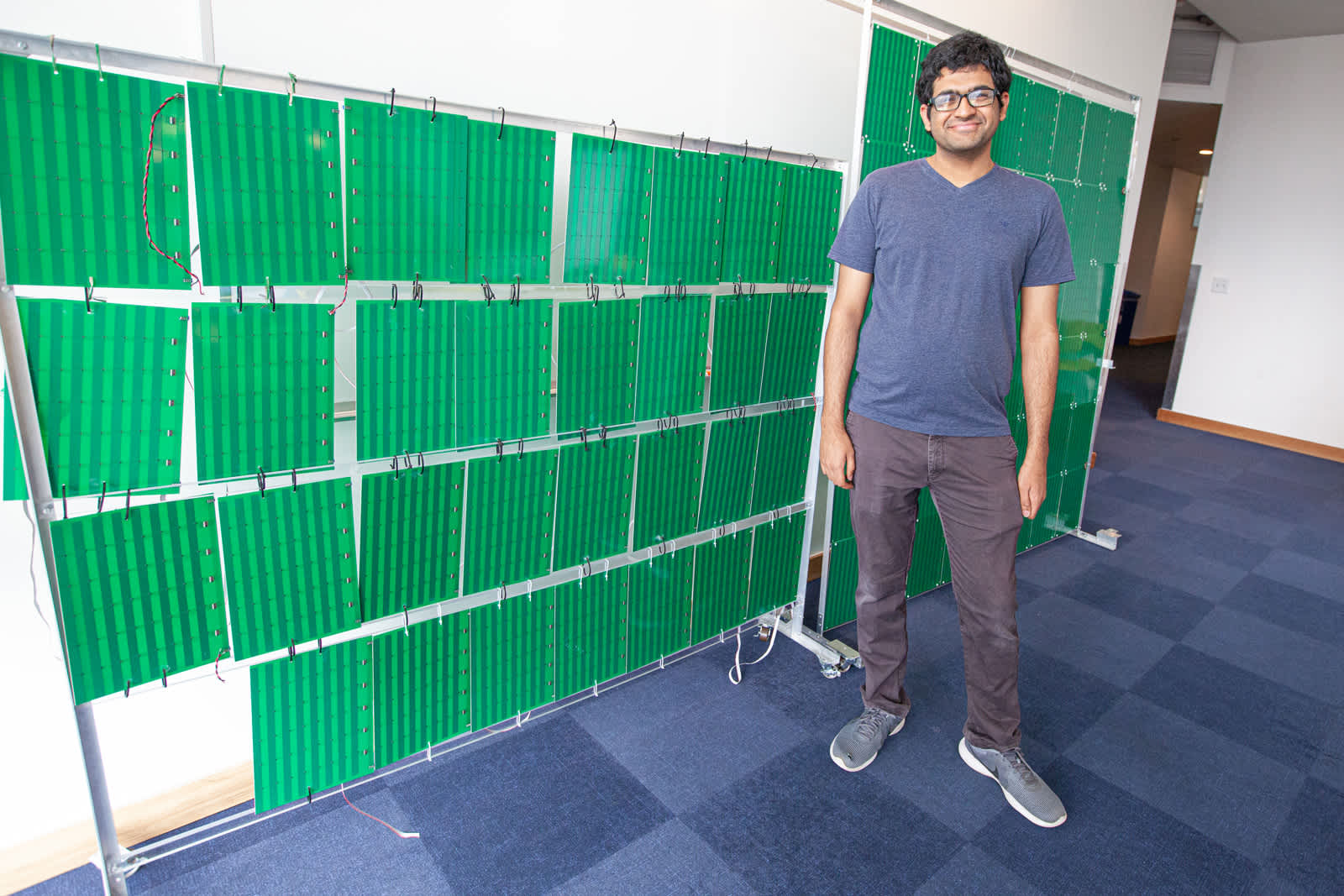
Engadget RSS Feed
Nest Wifi replaces Google Wifi, but without Wifi 6
Google has announced Nest Wifi, a replacement for their aging Google Wifi routers. There are a lot of similarities between the two models, but Nest Wifi brings even more Google Assistant capabilities, built-in speakers, and better wireless connections. They look a little sleeker, too. Let’s check them out. Smarter WiFi Through and through this is […]
Come comment on this article: Nest Wifi replaces Google Wifi, but without Wifi 6
[Review] Anker’s EufyCam WiFi cameras are great, but rough around the edges
Wifi cameras are one of the easiest upgrades you can make to your smart home, and they go a long way to securing your house. It’ll give you quick access to surveillance in your house, plus some intelligent motion detection and alerts if something out of the ordinary is happening. There are tons of options, […]
Come comment on this article: [Review] Anker’s EufyCam WiFi cameras are great, but rough around the edges
Android Q will heavily limit apps’ ability to scan for WiFi networks
With Android Pie, Google instituted a more heavy-handed approach to how apps can scan for WiFi networks. That irked some developers in some very legitimate use cases, since the limit effectively broke how some apps worked if they relied on multiple WiFi scans. Google isn’t backing down from that, either. Those WiFi scanning limits are […]
Come comment on this article: Android Q will heavily limit apps’ ability to scan for WiFi networks
Traeger Ironwood 650 review: WiFi is the ultimate pitmaster
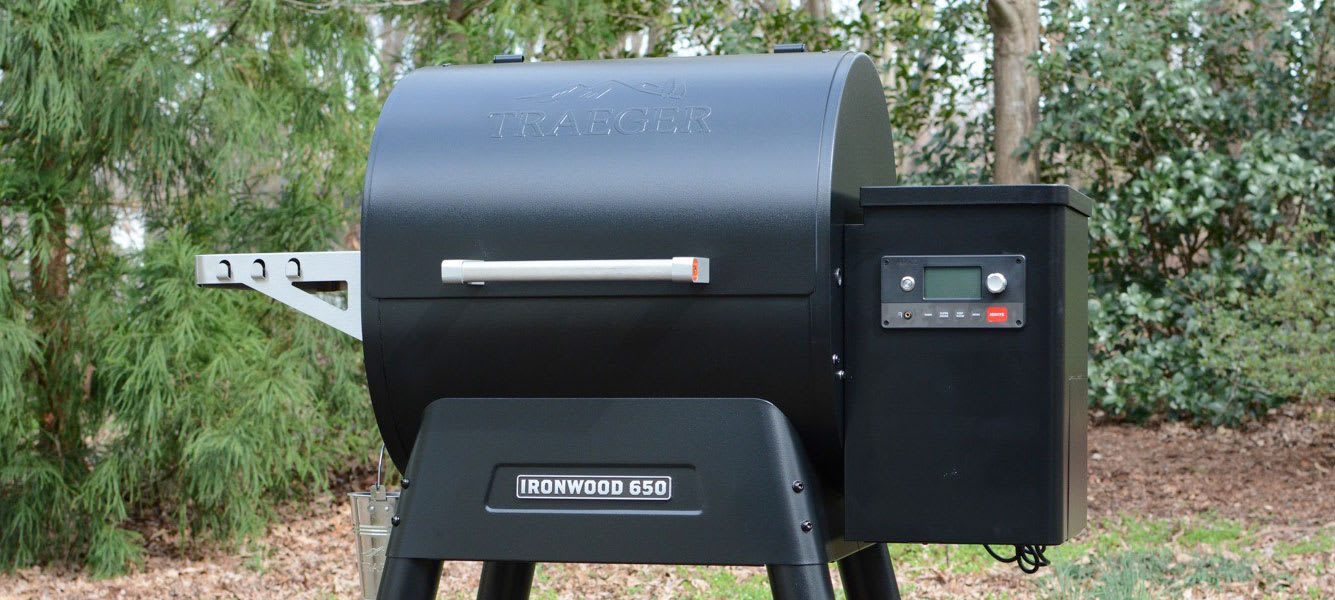
Engadget RSS Feed
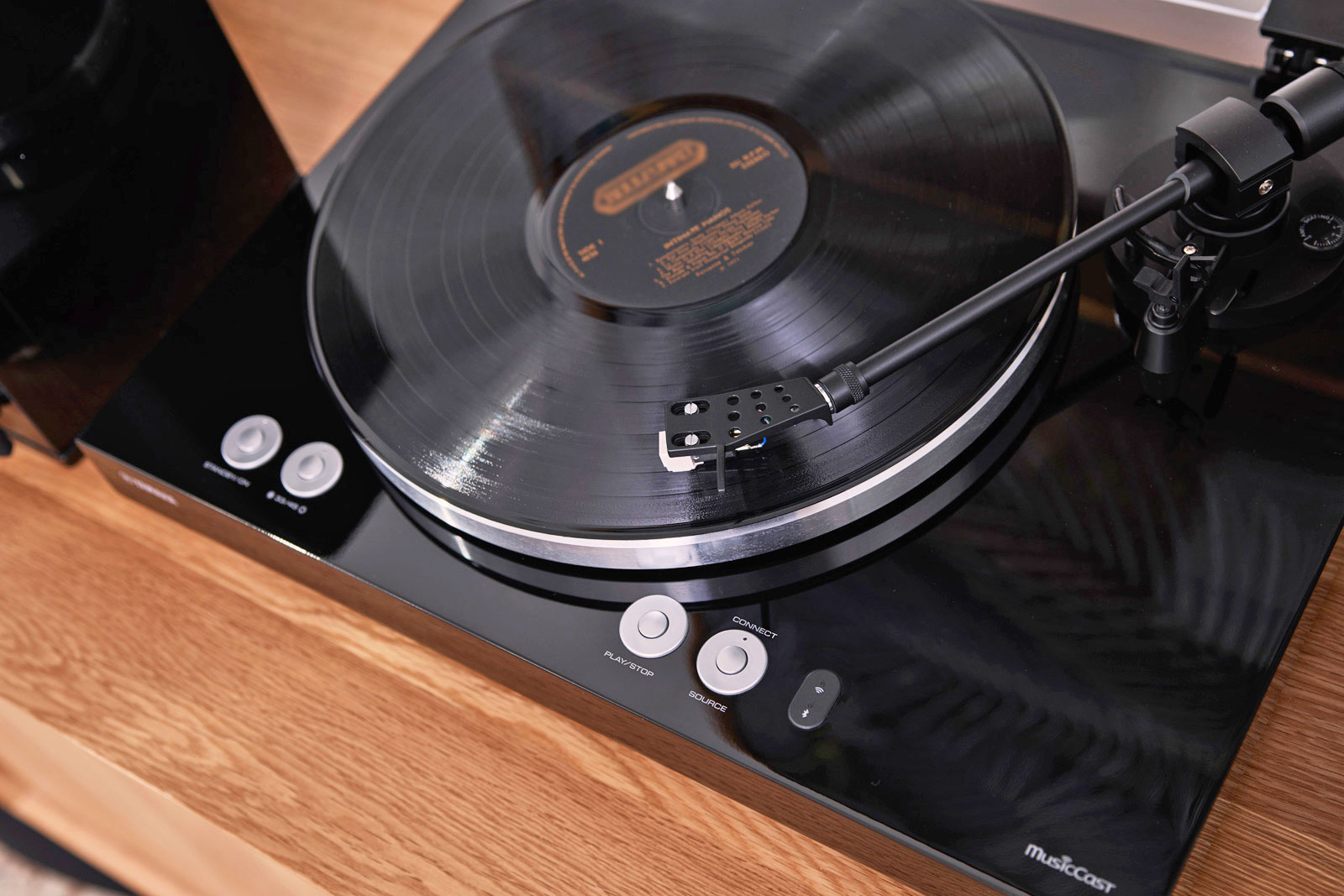
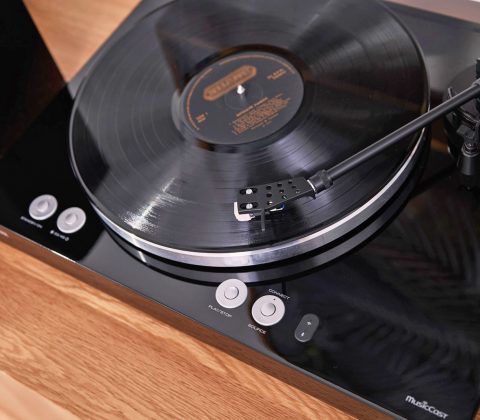
Yamaha’s latest turntable streams multi-room audio via WiFi
 You can pair a turntable with a multi-room audio setup (Sonos even offers a bundle), but that usually means wiring your record player into that setup at some point. Yamaha thinks it can do better. Its newly launched MusicCast Vinyl 500 turntable uses…
You can pair a turntable with a multi-room audio setup (Sonos even offers a bundle), but that usually means wiring your record player into that setup at some point. Yamaha thinks it can do better. Its newly launched MusicCast Vinyl 500 turntable uses…
Engadget RSS Feed
Unlimited plans reduce time spent on WiFi in the U.S.
Over the last few years, one of the trends we saw were attempts to expand the number of WiFi hotspots accessible by general consumers. Much of this was driven by a concern over limited support for the growing number of wireless devices. For consumers, it was a way to preserve their pot of data available […]
Come comment on this article: Unlimited plans reduce time spent on WiFi in the U.S.
[TA Deals] Improve your computer’s WiFi connection with NetSpot Pro
There’s nothing more annoying than a flaky internet connection, but we’ve got just the tool to help you fix that. NetSpot Pro is a helpful utility that analyzes your WiFi connections to set up the perfect network and eliminate dead zones and solve connection issues. It’s good to have in your toolbox if you spend […]
Come comment on this article: [TA Deals] Improve your computer’s WiFi connection with NetSpot Pro
Google Play services update fixes Chromecast Wi-Fi bug
Google is now rolling out a promised fix for Chromecast built-in devices, such as Google Home, Android TV, Chromecast, etc., to kill a bug wreaking havoc on Wi-Fi connections with slowdowns and even outages. Affected routers include those from TP-Link, ASUS, Linksys, Netgear and Synology. The issue was described as one that in certain situations, a […]
Come comment on this article: Google Play services update fixes Chromecast Wi-Fi bug


Comcast’s xFi app makes setting up your parents’ WiFi less painful
 There are plenty of great routers on the market, but most of them have simply horrible interfaces for setting up and configuring your WiFI network. Companies like Google and Apple have built smartphone apps that make managing WiFi much easier, but it…
There are plenty of great routers on the market, but most of them have simply horrible interfaces for setting up and configuring your WiFI network. Companies like Google and Apple have built smartphone apps that make managing WiFi much easier, but it…
Engadget RSS Feed
SpaceX wants to cover the globe with gigabit Wi-Fi using a fleet of satellites
An application filed with the Federal Communications Commission reveals that SpaceX wants to launch a fleet of satellites for global gigabit Wi-Fi. The service would first launch in the U.S., and go global once all satellites are in orbit.
The post SpaceX wants to cover the globe with gigabit Wi-Fi using a fleet of satellites appeared first on Digital Trends.
Loki Wi-Fi meat thermometer monitors your meal, tells you when it’s done
This “Smart Meat Thermometer” gives chefs a temperature probe for their cooking, and then relays the data via a mobile app to say how the food is cooking and when it’s likely to be ready.
The post Loki Wi-Fi meat thermometer monitors your meal, tells you when it’s done appeared first on Digital Trends.
D-Link’s new Wi-Fi security camera gives a wide 180-degree view of your home
D-Link’s latest home security camera can show you an entire room without having to pan, tilt, or use a second camera. It shoots in Full HD, offers integrated night vision, and and stores up to a week of 1080p video on a MicroSD card.
The post D-Link’s new Wi-Fi security camera gives a wide 180-degree view of your home appeared first on Digital Trends.


Netgear Orbi promises to rid your home of WiFi dead zones
 One of the most frustrating first world problems today is not being able to connect to your home WiFi network in spots that are farther away from your router. Netgear believes it can get rid of that problem with its latest product: a WiFi system call…
One of the most frustrating first world problems today is not being able to connect to your home WiFi network in spots that are farther away from your router. Netgear believes it can get rid of that problem with its latest product: a WiFi system call…
Engadget RSS Feed
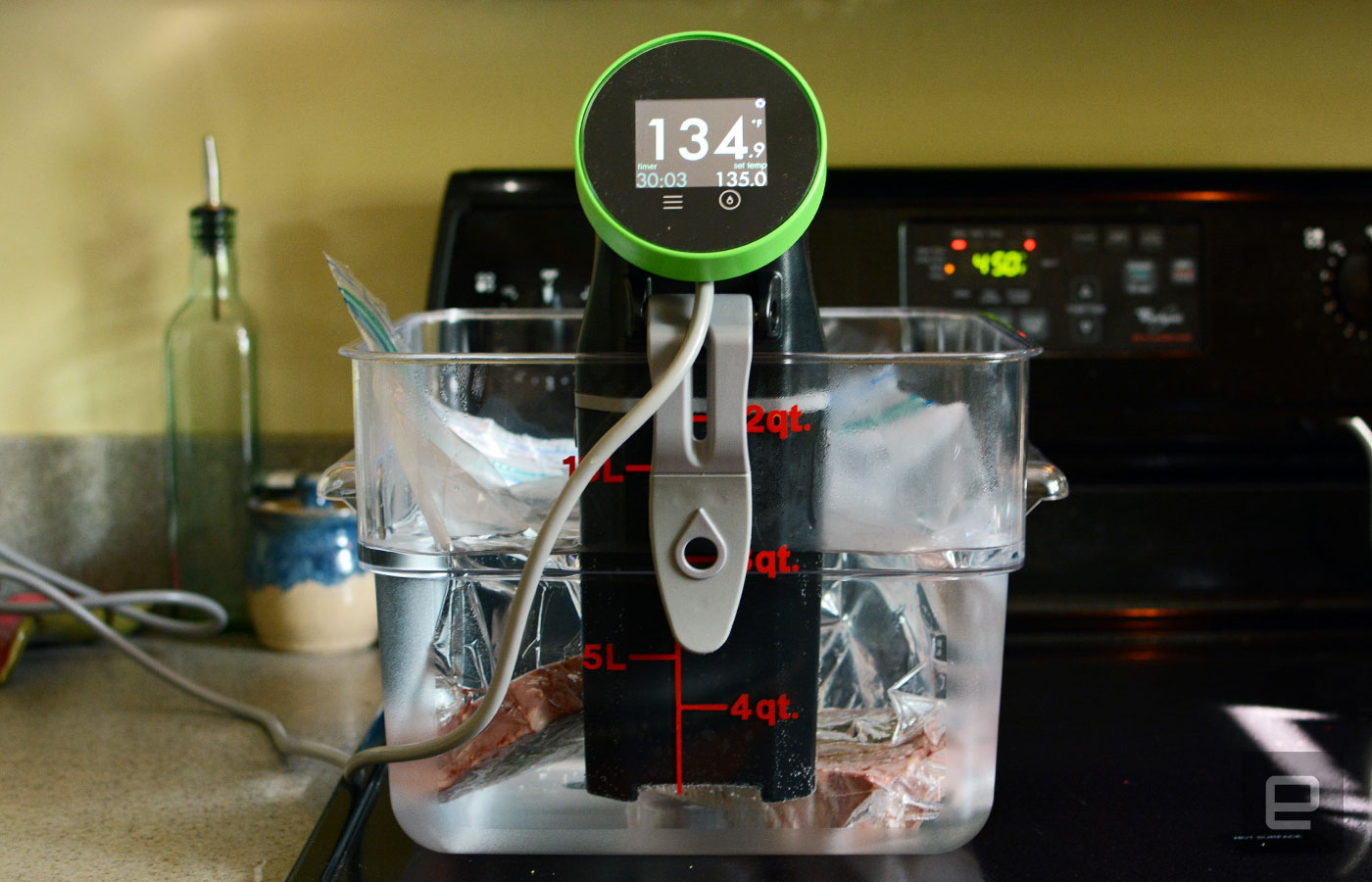
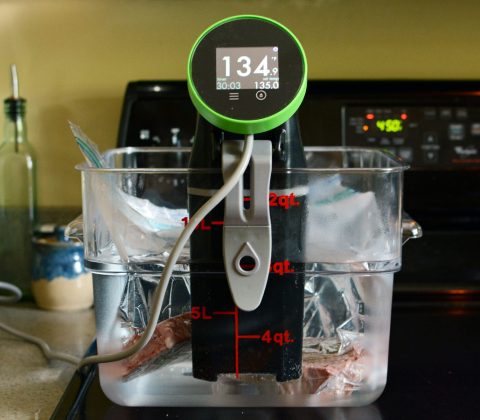
Does your sous vide gear really need WiFi?
 If you spend a considerable amount of time reading J. Kenji Lopez-Alt's writings on better cooking through science, you'll come across his sous vide steak guide. I've read what Lopez-Alt and others have to say about the culinary method for preparing…
If you spend a considerable amount of time reading J. Kenji Lopez-Alt's writings on better cooking through science, you'll come across his sous vide steak guide. I've read what Lopez-Alt and others have to say about the culinary method for preparing…
Engadget RSS Feed
Voice Bridge now lets you make calls with your landline from any Wi-Fi network
Invoxia’s Voice Bridge will soon be receiving an update that lets users make calls with their landline number on any Wi-Fi network. Previously it was restricted to making calls on your home Wi-Fi.
The post Voice Bridge now lets you make calls with your landline from any Wi-Fi network appeared first on Digital Trends.
Patent suggests we might see lower-power Wi-Fi tethering on Windows 10
If your phone’s battery life takes a massive hit when used as a Wi-Fi hotspot, Microsoft’s Power Saving Wi-Fi Tethering patent for Windows 10 Mobile could yield some favorable benefits.
The post Patent suggests we might see lower-power Wi-Fi tethering on Windows 10 appeared first on Digital Trends.


Samsung adds its own WiFi file transfer app to the Play Store
Samsung released their own WiFi transfer app cleverly named, “Wi-Fi Transfer”. The app will allow users to transfer files from one device to another, or to a computer.
Unfortunately, it is only available to Samsung phones, but there are plenty of alternative apps to pick from in the Play Store if you have another brand of device. However, what is nice about this app is you do not need an internet connection for it to work, all you need is a WiFi network. What is even better is you do not need to use a router or be connected on a large WiFi network either. Just turn on WiFi sharing on one device and have the other connect to it. Send all the files you want after that. Doesn’t get much simpler than that.
Come comment on this article: Samsung adds its own WiFi file transfer app to the Play Store
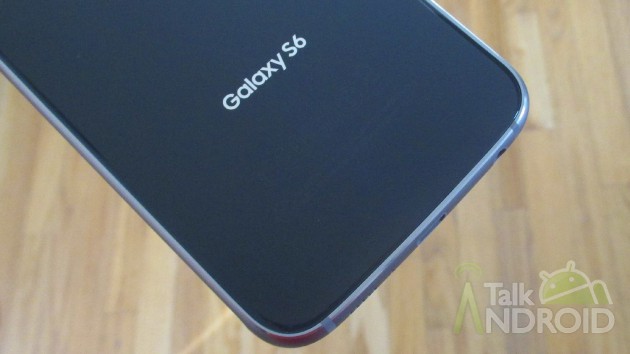
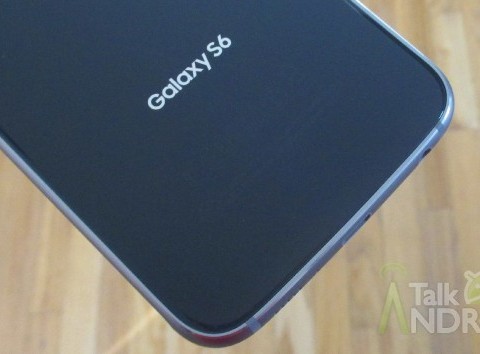
Vodafone UK now rolling out Wi-Fi calling update for the Galaxy S6 and S6 Edge
Vodafone UK has started pushing out a rather unexpected update to all its carrier-branded models of the Galaxy S6 and S6 Edge located in the United Kingdom. This upgrade carries support for the operator’s fairly new Wi-Fi calling service, which authorizes users to place calls via the Internet when they have no cellular signal without incurring any extra charges.
Unfortunately, you will need to be a subscriber of either a Pay Monthly Red, Red Value, Red+ or Business Premier plan to use the Wi-Fi calling platform. You’ll also need to ensure that your device was bought directly from Vodafone because if you purchased it from a third-party company, it won’t bundle the correct drivers for the feature to work. Other than these two provisos, using the service couldn’t be easier. Simply install the upgrade, then text the word “CALLING” to 97888 to enable it.
Source: Vodafone
Come comment on this article: Vodafone UK now rolling out Wi-Fi calling update for the Galaxy S6 and S6 Edge
All about LTE-U and how it might affect your Wi-Fi signals
Verizon and T-Mobile hope to soon begin testing new LTE connectivity using the same spectrum that powers Wi-Fi connectivity, spurring concerns about its effects on home Internet usage
The post All about LTE-U and how it might affect your Wi-Fi signals appeared first on Digital Trends.
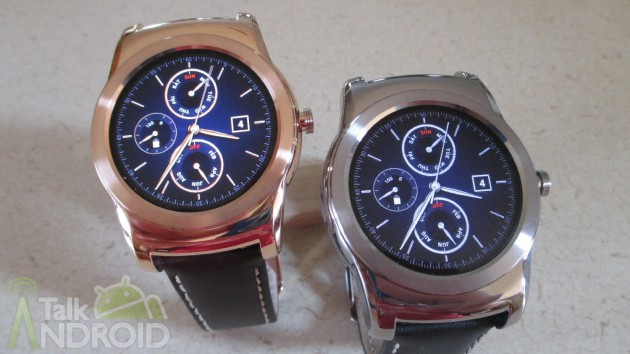
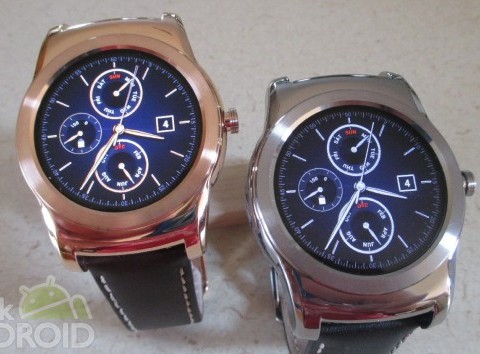
WiFi from LG Watch Urbane hacked onto LG G Watch R
Owners of the LG G Watch R who are willing to do some hacking work on the device now have an option available to enable the WiFi chip on the device. User Tasssadar on the XDA site figured out how to get the needed drivers off an LG Watch Urbane, with the help of intersectRaven, in order to make this possible.
The files needed to make everything work have been put together as a flashable ZIP for G Watch R owners who are willing to give it a go. Currently the solution has only been tested on devices running the 5.1.1 Android update. Users will also need TWRP installed as a custom recovery and an unlocked bootloader.
Tasssadar does note that this solution breaks over-the-air updates, so owners will have to be prepared to restore to a stock image when the next Android update rolls out if they want to get it OTA. In addition, although most people think LG did not enable WiFi on the G Watch R as a way to push buyers to the Watch Urbane, there is a possibility that some actual hardware issue exists and this could cause permanent hardware damage.
If you have a G Watch R and want to give this a try, just hit the source link below for links to the ZIP file and some kernels that will be needed.
source: XDA
Come comment on this article: WiFi from LG Watch Urbane hacked onto LG G Watch R


T-Mobile Nexus 6 now said to be getting the WiFi calling update
T-Mobile’s popular social media figure, Des on Twitter has subtly hinted that the WiFi calling update for the Nexus 6 could be rolling out starting today. His tweet said the following – “This is shaping up to be a very Happy Memorial day weekend… #Nexus6“
While he’s not making it obvious that the update is being sent out, the responses to the tweet mention that it is currently being sent out to the devices. Also the hashtag leaves nothing to the imagination.
We’re yet to see anything on the company’s site at the moment, but we’ll update you with more information as we have it. There shouldn’t be any other changes bundled with the update as the carrier is only enabling the WiFi calling feature.
So T-Mobile Nexus 6 users, are you seeing the update yet?
Source: @askdes – Twitter
Come comment on this article: T-Mobile Nexus 6 now said to be getting the WiFi calling update



